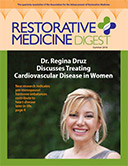Stem cells are cells at a very early stage of development that have the capacity to become any type of cell or to develop into specific cells for targeted therapeutic purposes.
Several preclinical studies of autoimmune encephalomyelitis, the experimental model of multiple sclerosis (MS), have demonstrated that stem cells may be able to repair damage when grafted into CNS lesions, thereby restoring lost neurological function. Stem cells used in animal models are derived from a number of origins including autologous hematopoietic, mesenchymal, neuronal, induced pluripotent, and human embryonic lines.
Now, accumulating evidence from human studies suggests that autologous hematopoietic stem cell transplantation (AHSCT), also known as hematopoietic stem cell transplantation (HSCT) is successful at inducing long-term remission and improvement in disability for people with relapsing remitting multiple sclerosis (RRMS) whose condition continues to deteriorate despite the use of available disease-modifying agents.
AHSCT for MS entails isolating and storing hematopoietic stem cells derived from a patient’s own bone marrow. The patient undergoes an intense conditioning procedure, which includes an immune-ablative regimen of chemotherapy to deplete their immune system. The patient also receives a pharmacological regimen to stimulate production and release of bone marrow stem cells. These hematopoietic stem cells are stored and subsequently transplanted into the patient to reconstitute their bone marrow and potentially reprogram or reset a new, healthy immune system. The mechanisms by which AHSCT is able to reconstitute a new immune system are complex and not entirely understood, but over time the result is greater T cell diversity. In this process, pathogenic Th17 lymphocytes are also reduced, and T cells that recognize and react to myelin basic protein are initially depleted although some may gradually reappear later.1
The results of two Italian studies both published in 2021 suggest that AHSCT has the potential to sustainably reverse established neuronal damage and to halt disease progression in MS. Both studies evaluated treatment success by MRI imaging and measuring participant's Expanded Disability Status Scale (EDSS) scores before and after stem cell transplant. In one study of 210 MS patients (58% with RRMS) who underwent AHSCT and have been followed for 10 years, researchers concluded that AHSCT prevented worsening of disability in the majority of participants, resulting in sustained improvement in participants with RRMS.2
The other promising study was a small, open-label trial with 26 participant who had moderate to severe secondary progressive MS. The majority of participants showed clinical signs of inflammatory activity and/or signs on MRI in the year prior to undergoing AHSCT. The primary outcome of this study was absence of further disease progression. Five years after the procedure, 42% of participants were stable with no further progression of disability. That number was reduced to 30% 10 years after the transplant. In 10 participants, disease progressed and then stabilized. In six participants, disease progression was severe. No inflammatory activity was noted on MRI after treatment. The results of this study suggest that AHSCT might be effective in patients with secondary progressive MS (SPMS) who show significant inflammatory activity on MRI.3
The medications and procedures used in AHSCT are approved by the FDA in the United States. The procedure requires a hospital stay of at least two to four weeks while the immune system is rebuilding. The immune system takes three to six months to rebuild, during which time the patient may be severely immunocompromised.
The National Multiple Sclerosis Society considers AHSCT to be a potentially effective therapeutic option for people with RRMS who experience significant ongoing development of CNS lesions and/or clinical relapses despite treatment with disease-modifying agents, or for whom the use of disease-modifying agents is contraindicated. The Society has published guidelines regarding AHSCT, including the profile of the best candidates: likely people younger than 50 years with shorter durations of disease (<10 years). They also advocate that the procedure should only be performed at centers with substantial experience and expertise, and that ideally recipients should be enrolled in clinical trials.4 One such trial, the Best Available Therapy Versus Autologous Hematopoietic Stem Cell Transplant for Multiple Sclerosis (BEAT-MS) is currently in progress. The BEAT-MS study is the first clinical trial to directly compare safety, efficacy, and cost-effectiveness of AHSCT with other therapeutics currently available for people with active relapsing MS.
It has become clear over the years of research on stem cell therapy that it is the high-intensity conditioning (immunosuppressive) protocols involving extensive T-cell depletion that pose a major risk for increased morbidity and mortality. The BEAT-MS study uses an intermediate-intensity regimen known as BEAM. Practitioners and their patients can find out more about clinical trials of stem cell therapy for MS.
References
- https://pubmed.ncbi.nlm.nih.gov/30935074/
- https://n.neurology.org/content/96/8/e1215.abstract
- https://pubmed.ncbi.nlm.nih.gov/32008439/
- https://jamanetwork.com/journals/jamaneurology/article-abstract/2771920
